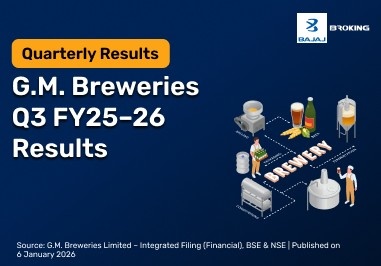Building a solid business strategy isn’t easy—especially without a clear way to assess all the competitive factors at play. Jumping into the market with a new product or service without understanding who you're up against can backfire quickly. On top of that, suppliers and customers won’t always stay loyal. This is where Porter’s Five Forces model proves helpful. It’s a go-to tool for analysing market competition and making smarter business decisions. Let’s break it down.
Five Forces of Industry Analysis
Porter’s Five Forces is a strategic tool used by businesses to analyse how competitive an industry is and whether it’s worth entering or staying in that market. It helps evaluate both risks and opportunities based on how the industry behaves.
Developed by Harvard professor Michael Porter in 1979, this model focuses on five key forces that influence a company’s success in any given market. These forces help determine how profitable and competitive the environment is.
In simple terms, these forces reveal how tough or easy it is for a business to serve its customers and make money. The five forces are:
1. Industry Rivalry (Competition Among Existing Players)
This force looks at how intense the competition is among businesses already in the market. If many companies offer similar products or services, competition gets fierce. That means lower prices, smaller profit margins, and more pressure to stand out.
On the flip side, if there are only a few players in the market, competition is lighter, and businesses have a better chance at earning steady profits.
2. Threat of New Entrants
This force reflects how easy or hard it is for new companies to enter the market and compete. If entry barriers are low, like minimal startup costs or few regulations, new players can join easily, increasing competition.
However, if things like brand loyalty, patents, high investment requirements, or strict laws are in place, it becomes much tougher for newcomers to enter. That gives existing businesses more breathing room.
3. Threat of Substitutes
This happens when customers can switch to another product or service that does the same job, possibly even better or cheaper.
Some common reasons people switch to substitutes include:
The alternative is more affordable.
The substitute has better features or quality.
There’s no switching cost or strong brand loyalty holding them back.
When many good substitutes are available, it puts pressure on businesses to improve or risk losing customers.
4. Power of Buyers (Customers)
Customers hold power when they can easily switch to other brands or push for lower prices. If the market has many sellers and few buyers, customers get to call the shots.
However, if the product is unique or part of a strong ecosystem. In short, when customers have choices and money to spend, they can demand more for less. Businesses must offer something special to hold their ground.
5. Bargaining Power of Suppliers
Suppliers are in control when they’re the only source of a key material or product. If they offer something unique or have a strong brand, they can charge higher prices or limit supply.
This can eat into a business’s profits unless it finds other options. Companies need to assess whether they can switch suppliers and how costly that switch would be. Managing supplier power is all about staying flexible and avoiding overdependence.
Example of Porter's Five Forces
Let’s look at how Porter’s Five Forces applies to the retail industry:
Competition Among Rivals:
Retail is a highly competitive space with many players fighting for market share. This often leads to price cuts, frequent promotions, and a tough battle for customer loyalty.
Big retailers usually have more influence over suppliers and can negotiate better deals, like lower prices or exclusive terms. Smaller retailers don’t have the same leverage and may struggle with rising supplier costs.
Shoppers in the retail space have numerous choices, particularly with the rise of online shopping. To keep customers, retailers must offer good prices, quality products, and great service.
Online shopping and e-commerce have made it easy for customers to switch from traditional stores. With so many options online, often cheaper and more convenient, brick-and-mortar stores face serious competition.
Threat from New Entrants:
It’s relatively easy for new players to enter the retail space, especially online. Still, well-known brands with loyal customers and large-scale operations have an edge that can keep new competitors at bay.
How to Analyse Stocks with Porter's Five Forces?
Here’s how you can use the Five Forces framework to evaluate a company’s position:
Begin by identifying the industry in which the company operates, as Porter’s model is designed to be industry-specific.
Examine the number of companies in the same space and the level of competition.
See How Easy It Is for New Entrants:
Analyse how likely it is that new businesses could enter the market. Consider the barriers that exist, such as startup costs, regulations, or economies of scale.
Understand Supplier Power:
Find out how much control suppliers have. Consider the number of suppliers available, the uniqueness of their products, and the ease of switching to others.
Consider the extent of a customer's influence. Are there many other options they could choose? Is it easy for them to switch brands?
Consider Substitute Products:
Review whether there are alternative products or services that buyers could use instead. A company offering products with numerous alternatives won't have the ability to easily raise prices to boost its profit margins. In fact, it might even risk losing customers to competitors who provide similar goods at lower prices.
Advantages and Limitations of the Model
1. Clear View of Industry Landscape
The model helps businesses break down their industry and identify the main forces influencing it. This gives a better understanding of how the market works and who the key players are, competitors, suppliers, buyers, and new entrants.
2. Insights into Profit Potential
By analysing each force, companies can spot what really drives profits in their industry. This enables them to concentrate their efforts on areas that can enhance margins, mitigate risks, and enhance overall business performance.
3. Stronger Negotiating Position
Understanding the balance of power between suppliers and customers helps businesses make smarter decisions. With this knowledge, they can negotiate better deals, lower costs, and improve supply chain efficiency.
Disadvantages and Limitations of the Model
While Porter’s Five Forces is a useful framework, it’s not without its drawbacks:
The model can make a complex market appear overly simple, which may lead to superficial analysis.
It doesn't always reflect how fast industries change, especially with evolving tech and shifting customer preferences.
Focuses Only on the Industry Level:
The tool mainly looks at the overall industry and may miss individual company strengths, weaknesses, or unique advantages.
It doesn’t always take into account the growing importance of collaboration and partnerships between businesses.
Conclusion
Porter's Five Forces assist companies in thinking beyond their competitors. It provides a 360-degree overview of what can influence success, ranging from new entrants and substitutes to strong buyers and suppliers. When companies get to know these forces, they can help formulate better strategies, minimise risks, and increase profitability in any market.
Disclaimer: This article is for informational purposes only and does not constitute investment advice. Bajaj Broking Financial Services Ltd. (BFSL) makes no recommendations to buy or sell securities.














